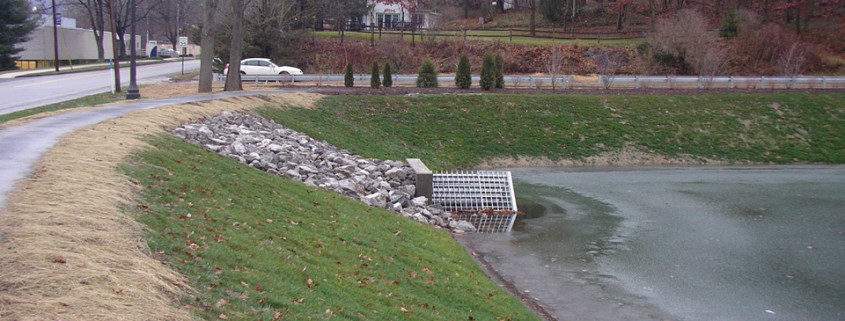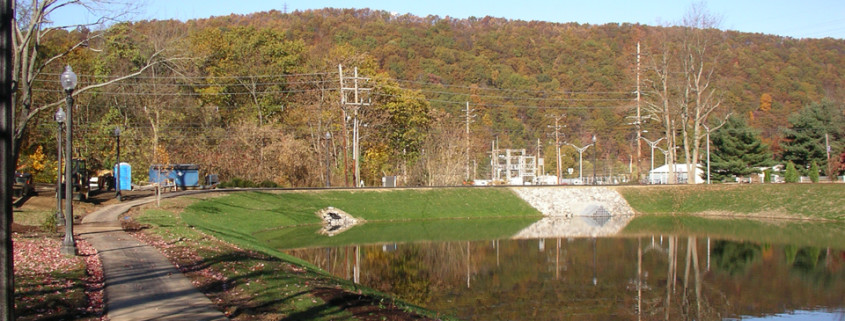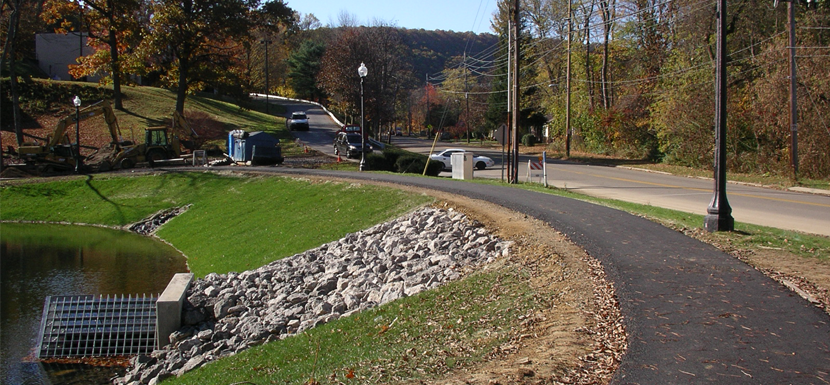by: Adrienne Vicari, P.E.
Act 68 gave municipal authorities the ability to finance, own, operate and lease stormwater facilities, but, two years later, many municipalities still have questions about whether an authority is right for their community. Aging infrastructure and increasing regulatory obligations from the state and federal government have put a heavy burden on towns across Pennsylvania, and they are searching for ways to finance stormwater management beyond general tax revenue. However, concerns about the upfront investment creating an authority would require and the possible backlash from members of the community give them pause.
Every municipality’s financial situation and stormwater needs are different, so it’s wise to seek the counsel of a consultant with dual expertise in engineering and financial consulting to design a custom solution tailored to those unique needs. If forming a stormwater utility is indeed a good fit for your community, your consultant can help you overcome the typical concerns through a strategic approach built upon sound financial and engineering principles.
Concern #1: The community will be against new fees for stormwater.
It is true that residents, business owners, and non-profit organizations will initially question the need for another bill; no one likes paying new fees. However, municipalities can win public support with extensive community involvement and educational outreach. It’s important to communicate that the new fee will be used exclusively for stormwater management and will not be “raided” for other purposes. It’s also important to show the community exactly how their money will be invested: list the specific improvements you intend to make and use photographs and illustrations whenever possible. Emphasize the fairness of the fee: that everyone pays for the services they use based on the stormwater they contribute to the system (and not simply the value of their property). Accentuate the positive by naming the fee after the benefits it provides to the community (such as a “Clean Water Management Fee”), as opposed to the problems it addresses. Invoice the fee separate from taxes, similar to water and wastewater billing.
Concern #2: It will cost too much to get the authority up and running.
Most municipal budgets are stretched to their limit as it is, so investing money in the start-up costs associated with a new authority is a hard sell when that money could be used for maintenance and repair of ailing infrastructure. But, even though the results are not physically tangible like new culverts or pipe repairs, the money you spend on a new stormwater authority is a true investment in your community’s future. The authority will cost money to get up and running, but it will create revenue in the future that can be used to proactively address stormwater needs before they become costly emergencies. What’s more, that dedicated revenue stream makes you eligible for grants and low-interest loan programs that otherwise would’ve been out of reach because of the need for matching funds.
Speaking of funding, some programs will help defray the start-up costs associated with organizing an authority. For example, West Goshen Township, Chester County, has entered into a 50/50 cost-share with the Army Corps of Engineers for technical assistance with mapping and inventory of their stormwater infrastructure. This step is necessary to develop the Stormwater Management Program and ultimately determine the revenue requirements necessary to establish and justify the stormwater rate.
Depending upon whether the municipality sells its stormwater assets to the authority or leases them, the municipality can also receive an upfront or annual payment from the authority for the transfer of facilities, which will help to absorb some of the start-up costs, as well.
However, municipalities may be able to avoid a lot of the start-up costs associated with an authority by simply adding stormwater to the charter for their existing water or wastewater utility. If they do, the structure and administrative functions (the board, billing, etc.) will already have been set up; the articles of incorporation will just need to be amended.
Concern #3: We don’t want to give away authority over our stormwater infrastructure, especially considering the liabilities we have from our MS4 permit.
Though the municipality can appoint people to its board, ultimately, the authority is an independent body that makes its own decisions. Yet currently the municipality – not the authority – is responsible for any fines incurred from not complying with MS4 permit requirements. This arrangement can easily seem dangerous to many municipal officials, but solutions are available.
A knowledgeable financial consultant can assist in structuring the authority in many different ways to give the municipality flexibility in deciding which powers and purposes it wishes to assign. One option is to set up an operating authority and pair it with a management and services agreement. Under this arrangement, the municipality transfers its facilities to the authority, who collects a rate and charges from local users to finance their operation, maintenance and improvements. The authority then “hires” the municipality to conduct operations and maintenance and perform administrative functions such as billing.
Another option is the reverse leaseback authority. Under this arrangement the municipality continues to own the facilities and finance capital improvements, but it leases the system to the authority for operation, maintenance and the setting of rates and charges.
Hybrid versions of these examples can also be established based upon the priorities and goals of the municipality.
In addition, PA DEP is currently working through amendments to its program which may allow municipalities to transfer their MS4 permits to a stormwater authority along with the drainage and stormwater facilities. By transferring the permit, the municipality would also transfer the legal obligations and liabilities that go with it.
As you can see, the concerns that municipalities have about stormwater authorities can be alleviated through joint financial and engineering planning. Though municipalities typically think of their stormwater infrastructure as an issue for their civil engineer, municipal authorities are primarily financial organizations, so a thorough understanding of finance is important to ensure financial and legal obligations are met in the most advantageous way to the municipality as possible. With fears allayed, municipalities are then able to see the many advantages a stormwater authority offers. In our next post, we discuss these advantages of forming a stormwater authority.
 Adrienne Vicari, P.E., is the financial services practice area leader at HRG. In this role, she has helped the firm provide strategic financial planning and grant administration services to numerous municipal and municipal authority clients. She is also serving as project manager for several projects involving the creation of stormwater authorities or the addition of stormwater to the charter of existing authorities throughout Pennsylvania. Contact Adrienne about stormwater authorities.
Adrienne Vicari, P.E., is the financial services practice area leader at HRG. In this role, she has helped the firm provide strategic financial planning and grant administration services to numerous municipal and municipal authority clients. She is also serving as project manager for several projects involving the creation of stormwater authorities or the addition of stormwater to the charter of existing authorities throughout Pennsylvania. Contact Adrienne about stormwater authorities.


 Adrienne Vicari, P.E., is the financial services practice area leader at HRG. In this role, she has helped the firm provide strategic financial planning and grant administration services to numerous municipal and municipal authority clients. She is also serving as project manager for several projects involving the creation of stormwater authorities or the addition of stormwater to the charter of existing authorities throughout Pennsylvania.
Adrienne Vicari, P.E., is the financial services practice area leader at HRG. In this role, she has helped the firm provide strategic financial planning and grant administration services to numerous municipal and municipal authority clients. She is also serving as project manager for several projects involving the creation of stormwater authorities or the addition of stormwater to the charter of existing authorities throughout Pennsylvania. 

